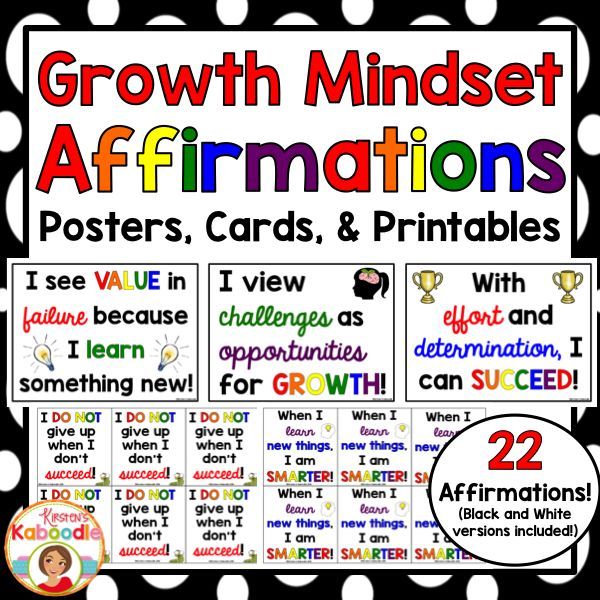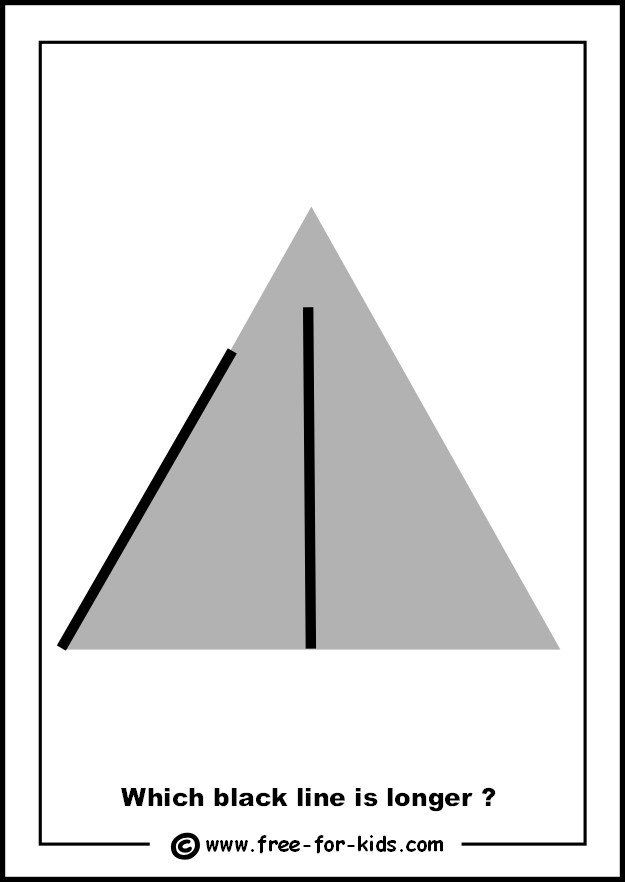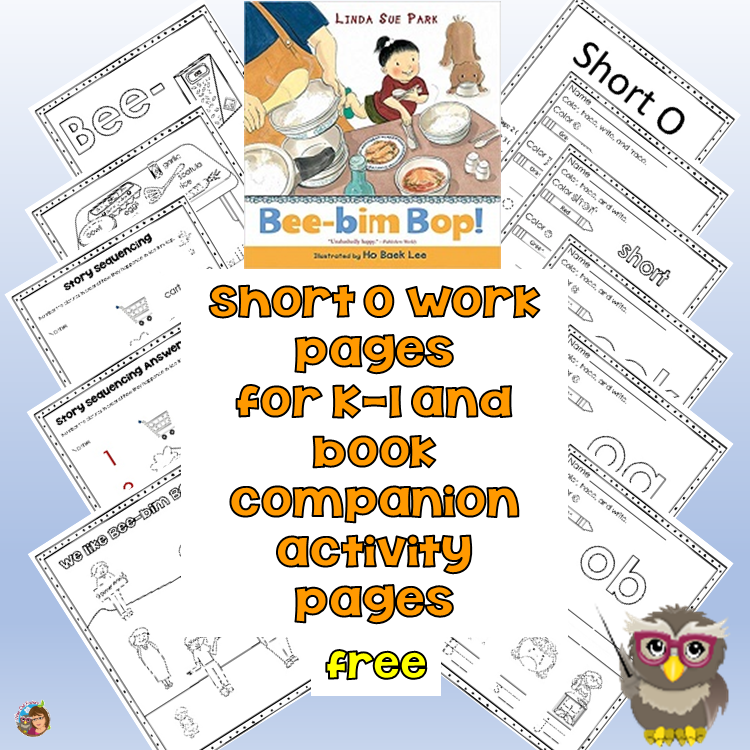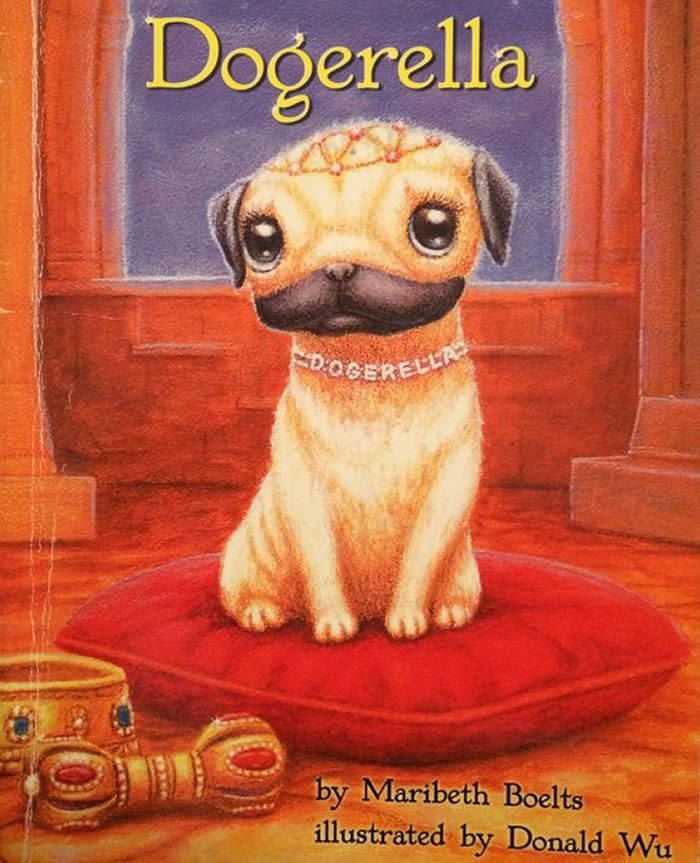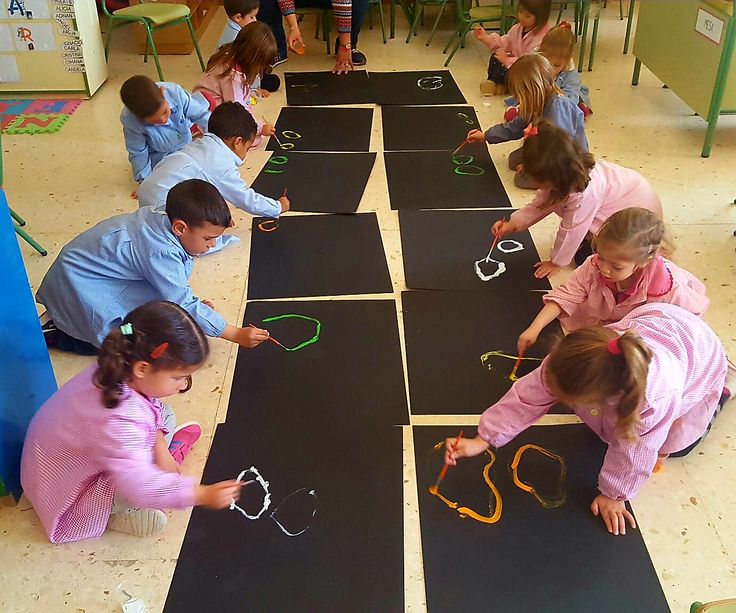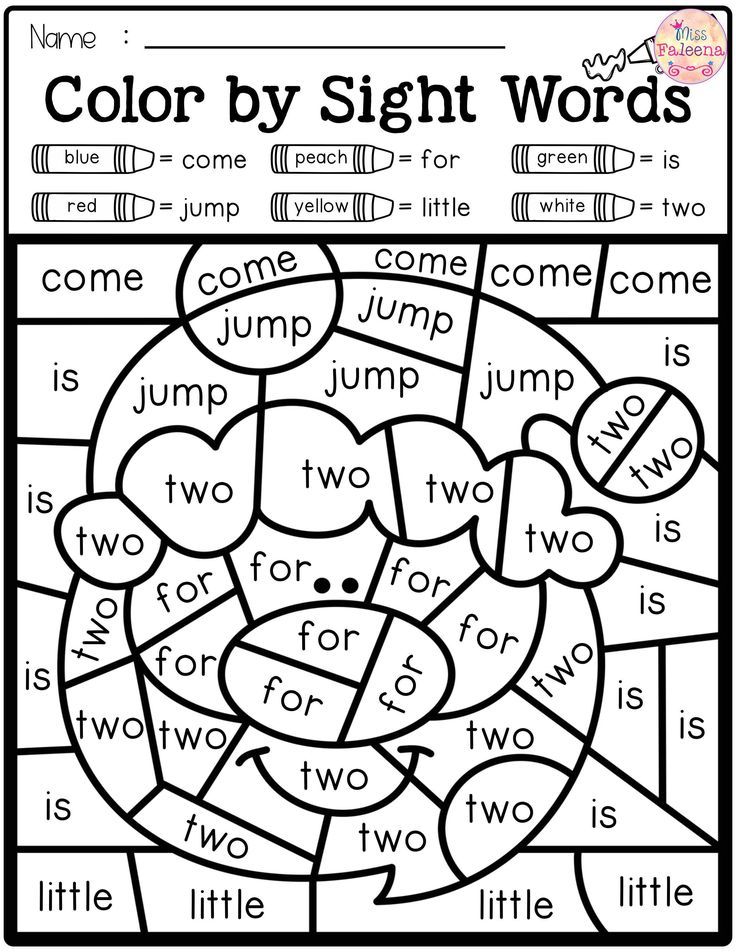Sid the science kid books
What's That Smell? (I Can Read)
By: Jennifer Frantz
Summary:
When Sid's mom calls him to breakfast, the only thing he can smell is Zeke's diaper. How can that be? Zeke is in the kitchen and he's down the hall near his bedroom. Once he gets close to the kitchen, though, he can smell Dad's famous pancakes. Sid is stumped. At school, Sid and his friends talk about things they smell from far away, and they learn about how our sense of smell works.
Reader Enjoyment Factors:
Kids will like this because it answers a perennial question about how we smell things. It will also get them to pay more attention to the smells around them.
Content Awareness Factors:
Once you've read this once or twice, it won't get much interest anymore.
Little Kid Reaction
My daughter grabbed this book right away because she loves Sid. She thought the information about molecules was nice, but she really liked the three jokes at the end.
Parent Reaction
These stories have a great way of weaving factual information into a kid-relevant story. It has the "choppiness" and big illustrations of a Level 1 book, but more text than you would expect.
Type of Book:
This is an easy reader story based on the PBS series Sid the Science Kid
Educational Themes:
This is a great first-science book on how our sense of smell works. It would be fun to replicate the classroom experiment at home, by letting kids try to smell different things.
Reading Level:
1.1
Recommended Age To Read By Yourself:
6 to 9
Recommended Age To Read Together:
4 to 8
Age of child:
Read by an 8-year-old girl.
Purchase Recommendation:
Borrow. This is a valuable story and is a nice complement to other books featuring Sid, but the cuteness of it will be quickly lost.
| Title | Sid the Science Kid: What's That Smell? |
| About | I Can Read, Level 1 |
| Author | Jennifer Frantz |
| Publisher | HarperColl © 2010 |
| ISBN | 9780061852596 |
| Material | Hard Cover |
| Cost | $3.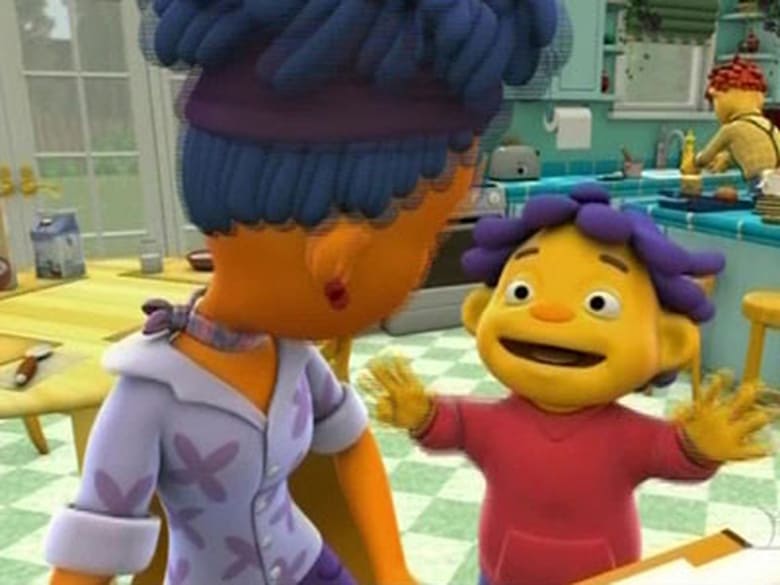 99 99 |
| Genres | Science |
Reminder: Cover images, amazon.com and indiebound.org links are affiliate links. The Reading Tub can earn income via purchases made via these links. 100% of any income goes directly to our literacy mission.
You May Also Like...
Check out these books you may also like
BOOK REVIEW
Flamingos
BOOK REVIEW
Sid the Science Kid: Everybody Move Your Feet!
BOOK REVIEW
Bugged!
Sid the Science Kid TV Review
A Lot or a Little?
The parents' guide to what's in this TV show.
Stands out for and .
What Parents Need to Know
Parents need to know that Sid the Science Kid encourages preschoolers' curiosity about the world around them and promotes finding answers through hands-on exploration. Sid and his friends are always excited to learn new things and solve pint-size scientific mysteries like "Why are my shoes shrinking?" and "Why do bananas get mushy?" The show -- which is co-produced by The Jim Henson Company -- introduces kids to the basics of scientific study, but they'll be so busy enjoying the show's use of song, dance, and humor that they may not even realize they're learning.
Community Reviews
Brettamatheny Adult
December 4, 2021
age 3+
1 person found this helpful.
Benita Smith Adult
March 8, 2021
age 2+
Save/Keep Sip the Science Kid
Please don't delete or get rid of Sid the Science Kid from Netflix. This show is so educational and fun for all ages. I raised my kids off this show and now i am helping my niece raise her kids (age 5 months and one yrs old). It's an all day family thing for me.
This show is so educational and fun for all ages. I raised my kids off this show and now i am helping my niece raise her kids (age 5 months and one yrs old). It's an all day family thing for me.
This title has:
Great role models
1 person found this helpful.
What's the Story?
SID THE SCIENCE KID introduces kids to the basics of science through the eyes of a young boy named Sid (voiced by Drew Massey), whose insatiable curiosity about the world around him leads to discoveries of all kinds. Each day Sid and his friends tackle a new question that's sure to resonate with their young viewers; episodes have explored why snowmen melt, why leaves fall in autumn, why teeth are different shapes, and more. Under the guidance of his parents, grandmother, and caring teacher Miss Susie (Donna Kimball), Sid uses scientific techniques like observation, measurement, and data collection to discover answers to his many questions.
Is It Any Good?
This enjoyable educational series fills a gap in preschool programming, which has more often tended to focus on developing kids' readiness for reading and math.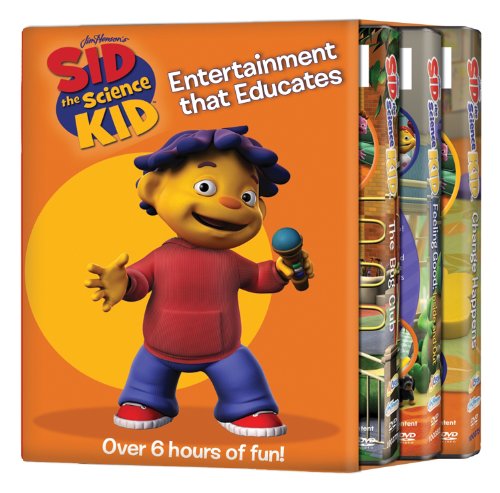 With Sid as their guide, kids will be inspired to ask question as a means of discovering new things, and they'll want to make observations and test their own scientific theories. The show's dual settings -- Sid's school and his home -- remind young viewers that the scientific world is all around us, waiting to be explored. With some encouragement from parents, there's no end to the educational opportunities that could be inspired by Sid's curiosity.
With Sid as their guide, kids will be inspired to ask question as a means of discovering new things, and they'll want to make observations and test their own scientific theories. The show's dual settings -- Sid's school and his home -- remind young viewers that the scientific world is all around us, waiting to be explored. With some encouragement from parents, there's no end to the educational opportunities that could be inspired by Sid's curiosity.
And, learning aside, Sid the Science Kid is sure to be a hit with kids because it's got plenty of music, dance, and all-around good fun. Preschoolers will enjoy aspiring comedian Sid's silly antics and the jokes that he and his friends make up (they're always related to the episode's theme). It's so entertaining that parents might find themselves drawn to watch as well -- and those who do may well learn a few things, too.
Talk to Your Kids About ...
Families can talk about the kinds of things that kids like to learn about.
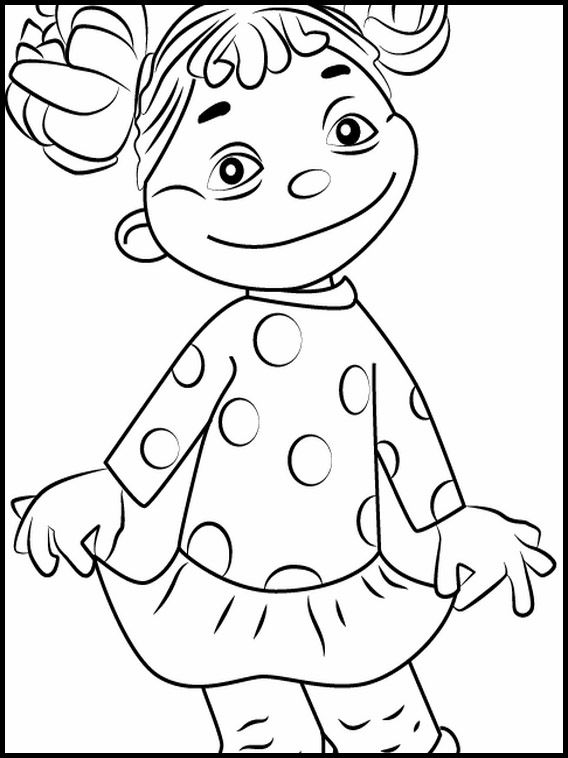 Kids: Where do you get your information? What places can you visit to learn more? Which of the scientific methods that Sid learns about on Sid the Science Kid have you used? How do scientists use tools to help them discover things? What tools do you use?
Kids: Where do you get your information? What places can you visit to learn more? Which of the scientific methods that Sid learns about on Sid the Science Kid have you used? How do scientists use tools to help them discover things? What tools do you use?Families can take the opportunity to check out local museums, zoos, and aquariums to inspire their kids' interest in the sciences.
How do the characters in Sid the Science Kid demonstrate curiosity and respectful communication? Why are these important character strengths?
TV Details
- Premiere date: September 1, 2008
- Cast: Alice Dinnean, Drew Massey, Julianne Buescher
- Network: PBS Kids
- Genre: Educational
- Topics: STEM, Friendship, Science and Nature
- Character Strengths: Communication, Curiosity
- TV rating: TV-Y
- Last updated: March 2, 2022
Sid, Science Kid
Sid, Science Kid (also known as Sid Jim Henson, Science Kid ) is an American half-hour computer-animated series on PBS Kids. It aired from September 1, 2008 to March 25, 2013, with a total of 68 half-hour episodes filmed over two seasons. [2] The computer generated show is produced by The Jim Henson Company and PBS member KCET in Los Angeles, California using Henson Digital Puppetry Studio. The show is producing motion capture which allows puppeteers to voice characters with real-time digital animation. [3] [4]
It aired from September 1, 2008 to March 25, 2013, with a total of 68 half-hour episodes filmed over two seasons. [2] The computer generated show is produced by The Jim Henson Company and PBS member KCET in Los Angeles, California using Henson Digital Puppetry Studio. The show is producing motion capture which allows puppeteers to voice characters with real-time digital animation. [3] [4]
Production began in autumn 2008 with 42 half-hour episodes of Sid, Child of Science was ordered. The series debuted on PBS Kids alongside March says on September 1, 2008, [5] with a two-year on-air commitment. [6] The original working title of the series was What's the Big Idea? and the main character, Sid, was originally named Josh. The series is the second CGI animated show to use the motion capture technique after Donkey Kong Country. [7]
KOSE, PBS' current main contributor in the Los Angeles area, began co-producing the show after KCET withdrew from PBS on December 31, 2010 (although the station later returned to PBS as an additional contributor in that area in 2019).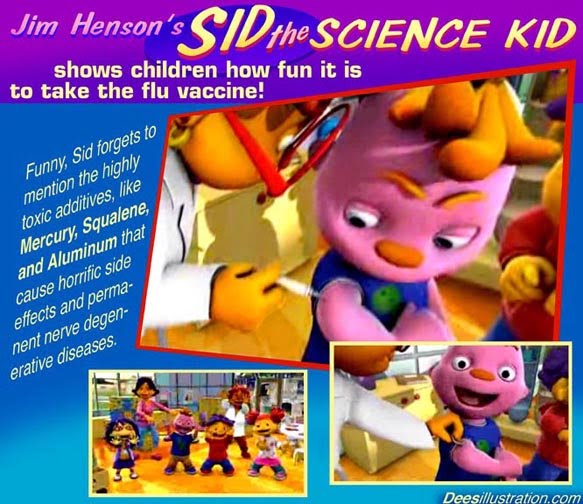
Contents
- 1 Package
- 2 Segments
- 2.1 Breakfast time
- 2.2 Looking for my friends
- 2.3 What's the big idea?
- 2.4 Overview LED
- 2.5 Carpet
- 2.6 Super FAB Lab
- 2.7 Good afternoon
- 2.8 The game time / Let's play
- 2.9 Singing with Suzi
- 2.10 Driving with grandmother
- 2.11 A scientist in the house!
- 2.12 Super duper oper shmooper Sid's big idea!
- 3 Symbols
- 4 Episodes
- 4.1 Child Scientist Sid: The Movie (2013)
- 5 Awards
- 0038
- 7 Recommendations
- 8 external link
Package
The main character of the series is Sid, an "inquisitive young man" who uses comedy to answer children's questions about basic scientific principles and why things work the way they do. He tries to answer questions and solve problems with the help of his classmates (May, Gerald and Gabriela), Teacher Susie and his family (his mother Alice, his father Mort, his grandmother Rose and his younger brother Zeke).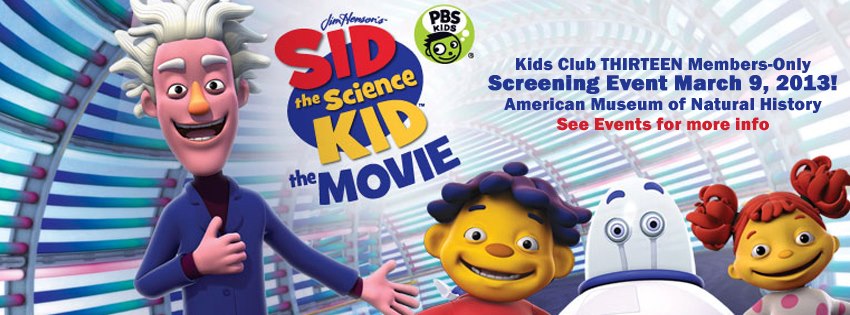 In "Hello Doggie", Sid's grandmother adopts an animal shelter dog (whom she names Filbert - voiced by Bruce Lanoil, [ quote needed ] movement filmed by Daisy the dog).
In "Hello Doggie", Sid's grandmother adopts an animal shelter dog (whom she names Filbert - voiced by Bruce Lanoil, [ quote needed ] movement filmed by Daisy the dog).
Sid's conceptual content is based on National Science Education Standards, Cognitive Learning Theory, and Pathways to Science curriculum for preschools. [8]
Each week's episodes are built around a single scientific topic or concept. The first week (episodes 1-5) is devoted to scientific tools and concepts (such as charts, observations, estimates, and measurements). The second week (episodes 6–10) is about change and transformation (including decay, growth, freezing and thawing, and exposure to heat). The third week (episodes 11-15) focuses on the senses (including touch, smell, sight and hearing). The fourth week (episodes 16–20) is all about health (including brushing your teeth, eating, sneezing, and exercising). The fifth week (series 21-25) is devoted to simple machines (including wheels, inclined planes, levers and rods). Week six (episodes 26–30) is devoted to backyard science. The seventh week (series 31-35) is dedicated to the human body. The eighth week (series 36-40) is dedicated to the weather. Friday shows are designed to explore, reinforce and summarize the central concept of the week.
Week six (episodes 26–30) is devoted to backyard science. The seventh week (series 31-35) is dedicated to the human body. The eighth week (series 36-40) is dedicated to the weather. Friday shows are designed to explore, reinforce and summarize the central concept of the week.
Segments
Breakfast time
Breakfast time is when Sid runs down the hall shouting the name. Then his parents, Alice or Mort, teach him something related to this problem.
Looking for my friends
When Sid comes to school, he goes to the playground to look for his friends May, Gerald and Gabriela. When he finds each other, he makes a cool move. Then, when everyone has found each other, they all dance together.
What's the big idea?
What's the big idea? is the question Sid has about everything related to the problem.
Sid's Review
Sid's Review is a segment where Sid questions May, Gerald, and Gabriela.
Rug Time
Rug Time is where Sid shows his friends and teacher something related to the problem.
Super Fab Lab
Super Fab Lab is where scientists do a lab with a live action class (in fast motion) doing the experiment of the day.
Good afternoon
"Good Laughter" is children opening panels in a bright playground and telling jokes. The format and set borrow heavily from Rowan's closing "wall of jokes" and Martin's laugh Wall Stan from Square One TV and "locker jokes" from You Can't Make It on TV, but for preschoolers, Syd would end the segment by saying, "And now is funny! "along with a pre-recorded laugh from his toy microphone. It was cut from the PBS Preschool airing.
Play time / Let's play
Play is when the class finishes the experiment, the children play in the classroom or on the playground.
Singing with Susie
"Singing with Susie" is when Susie's teacher sings a song related to an experiment or theme at the end of the school day.
Driving in the Backseat with Grandma
Driving in the Backseat with Grandma Grandma (Rose) tells the story of how she was little when driving Sid home from school. Sometimes she drives Gabriela with Sid.
Sometimes she drives Gabriela with Sid.
The scientist is in the house!
The scientist is in the house! this is when Sid solves a problem and/or plays with his family after school. Sometimes Sid had a date with Gabriela after class " Two Scientists in the house!"
Super Duper Oper Schmooper Sid's big idea! This is where Sid would think before going to bed about what he would do to solve a problem like the one he had at school.
Symbols
- Sid (motion shot by Misty Rosas, voiced by Drew Massey) has always wanted to be a scientist when he grows up. Sid is the most down-to-earth character in the series and is often portrayed as a very supportive friend and the lead scientist in his group. At school, he got so many questions every single day after thinking about the questions the night before. His special item is a toy microphone with four different colored buttons. When pressed, the blue button plays recorded human laughter, the yellow button plays recorded applause, the red button makes a cow sound, and the white button records an echo.
 He wants to know "everything about everything." He loves to sing and dance. He is a well-known observer and possibly the smartest of the group. His daily activities always include breakfast, study, meeting friends, asking friends questions, solving the teacher's big question of the day, doing experiments at the Super-Fab-Lab, and then finally finishing the teacher's daily song. before heading home for the day. Sid's mother is of African descent and primarily does research, as noted in each individual episode, while his father was raised Jewish, as noted in the Hanukkah/Christmas/Kwanzaa episode.
He wants to know "everything about everything." He loves to sing and dance. He is a well-known observer and possibly the smartest of the group. His daily activities always include breakfast, study, meeting friends, asking friends questions, solving the teacher's big question of the day, doing experiments at the Super-Fab-Lab, and then finally finishing the teacher's daily song. before heading home for the day. Sid's mother is of African descent and primarily does research, as noted in each individual episode, while his father was raised Jewish, as noted in the Hanukkah/Christmas/Kwanzaa episode.
- Gabriela (motion shot by John Munro Cameron, voiced by Alice Dinnean) is still one of Sid's three best friends. Unlike her friends, Gabriela is the most sensible character and often comes up with the most sensible jokes during Good Evening. She is the most authoritative figure in the quartet, and is often the leader of group activities. She is usually the type who likes to come up with role-playing games, always choosing the role of "mommy".
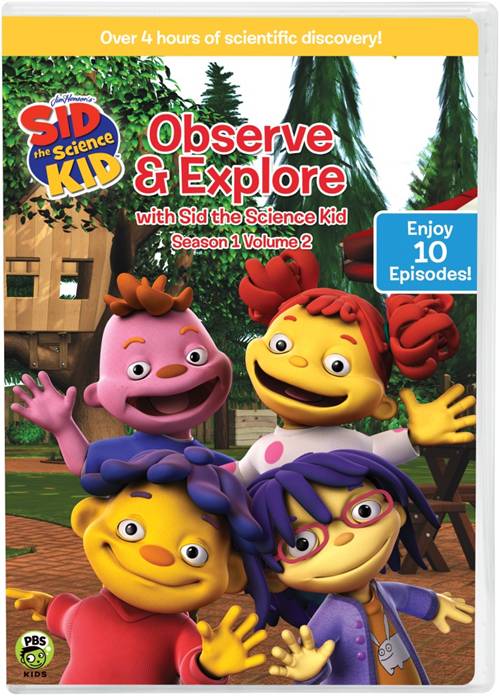 Presumably, she can read and potentially help others in her group who don't understand something, in the lab or in any other academic activity. She rarely comes to Sid's house to play with him, but she does more than the other two kids, and she needs her parents' permission to do so. She has an older brother named Mateo.
Presumably, she can read and potentially help others in her group who don't understand something, in the lab or in any other academic activity. She rarely comes to Sid's house to play with him, but she does more than the other two kids, and she needs her parents' permission to do so. She has an older brother named Mateo.
- May (motion shot by Dana Michael Woods, voiced by Julianne Buescher) is one of Sid's best friends, noted for her striped stockings and fairness. She is Asian and has very poor distance vision. She is one of the friendliest characters in the group. She is very polite and distinguished by charm and courtesy. Mei is often sympathetic to everyone, appreciating even inanimate objects such as rotten pumpkins and soft brown bananas that actually exist. Mei has a cat named Mushu, she is smarter than her three friends.
- Gerald (motion shot by Alon Williams, voiced by Victor Yerrid) is Sid's best friend. Although he often puts things off at the beginning of Rug Time, he is still a wonderful person.
 He has a dog named Chester. He is a very valuable character of the quartet, perhaps the most striking character of the group, often being the soul of the activity. The running gag is that he always tries to be funny but fails miserably.
He has a dog named Chester. He is a very valuable character of the quartet, perhaps the most striking character of the group, often being the soul of the activity. The running gag is that he always tries to be funny but fails miserably. - Susie (motion directed by Sonya Leslie, voiced by Donna Kimball) is a Mexican-accented teacher at Sid's school. She starts the day with "Carpet Time" when she calls her students to sit in a circle and asks them if they have anything to share with the class. Usually what gets everyone's attention is what was discussed during "Sid's Poll" and what Sid was thinking about earlier in the day. She demonstrates experiments with her class every day that her students are present, following the main theme of Sid's question. She sings to children during the "Singing With Susie" segment at the end of the school day.
- Mort (motion directed by John Munro Cameron, voiced by Victor Yerrid) is Sid's father. Mort works in construction and often links Sid's observations to his work experience.

- Alice (motion directed by Sonya Leslie, voiced by Alice Dinnean) is Sid's African-American mother. Alice is a website designer and developer of children's computer games (Episode 58 "An Amazing Computer Science Tool!"). She also frequently searches the internet for Sid to answer his main question before taking him to school. Her name is likely an allusion to her voice actress.
- Zeke (motion directed by Alon Williams, voiced by Donna Kimball) is Sid's younger brother. He is almost a year old and doesn't know anything yet, although he will know more and more as he gets older and goes to kindergarten.
- Rose (Sid's grandmother) (motion shot by Dana Michael Woods, voiced by Julianne Buescher and Donna Kimball) is Sid's paternal grandmother and Mort's mother. She loves to tell Sid stories about herself when she was younger when she was driving home from school.
- Dr. Rosalind Cordova (motion shot by Michelan Sisti, voiced by America Ferrera) is Gabriela's mother.
 She works at the Science Center, which is frequented by children. It helps to explain the various exhibits of the center and their relation to the school lessons the children are teaching. Sometimes she will visit other preschoolers at the school and collaborate with Susie's teacher. She is very proud of her daughter Gabriela, who is doing well in school.
She works at the Science Center, which is frequented by children. It helps to explain the various exhibits of the center and their relation to the school lessons the children are teaching. Sometimes she will visit other preschoolers at the school and collaborate with Susie's teacher. She is very proud of her daughter Gabriela, who is doing well in school.
Episodes
Main article: List of Sid the Science Kid 9 episodes0017
Child Scientist Sid: The Movie (2013)
Child Scientist Sid: The Movie Premiered on PBS Kids on March 25, 2013. It featured the show's original cast, as well as the voice of a special guest. Christopher Lloyd as Dr. Bonanodon. In the film, Sid and his friends enter a competition and win a trip to the new science museum in town. They are allowed to enter the museum before it officially opens to the public. Along the way, they meet new friends; such as Yang Yang, Niu Niu and BobbyBot. However, one of the robots malfunctions, resulting in complete chaos and devastation in the museum, which jeopardizes the grand opening of the museum. Sid and his friends must save the museum before it opens. It also serves as the series finale for Sid the Science Kid. 9 Cleveland, (March 26, 2012). ""Sid the Science Kid" Wins Genesis Award. Big cartoon news . Retrieved March 26, 2012.
Sid and his friends must save the museum before it opens. It also serves as the series finale for Sid the Science Kid. 9 Cleveland, (March 26, 2012). ""Sid the Science Kid" Wins Genesis Award. Big cartoon news . Retrieved March 26, 2012.
external link
- PBS Kids' Sid, science kid website
- PBS Kids' Sid, science kid 6 Read and play app
- PBS0 037 PBS Kids'
baby of science Science Fair app - Sid, baby of science on IMDb
- Sid the Child Scientist: The Movie on IMDb
- Sid the Science Kid on the Big Cartoon Database
Top 10 children's non-fiction books of 2014 there are a great many of them. Therefore, perhaps, it is worth explaining the selection criteria here. It seems to me that, first of all, books that are unusual in the form of material, its structure are interesting. Therefore, there is not a single familiar encyclopedia on this list - precisely because of their “habituality”.
 Unexpected and surprising publications, and sometimes just funny books about science and everything connected with it, got here. Any of them will be a great gift for the New Year.
Unexpected and surprising publications, and sometimes just funny books about science and everything connected with it, got here. Any of them will be a great gift for the New Year. The most winter book
Lena Schoenberg. "Hot Ice Facts". Samokat, 2014
This is an excellent winter book, it contains many children's questions and answers that children can understand.
Did you imagine that there is salt ice, spring ice, drift ice, pack ice, and even ice tallow? Let's open the secret: this is the name of the accumulation of ice needles mixed with water. Have you ever heard ice music? It turns out that ice blocks can be used to make a musical instrument - an ice guitar or an ice violin. Blocks of ice suspended from ropes can be used as bells.
For whom? A good winter gift under the Christmas tree for younger students.
The fastest book
Mike Goldsmith. "Scientific discoveries in 30 seconds". RIPOL Classic, 2014
Ripol has already published three books in the 30 Seconds series, and they are all wonderful.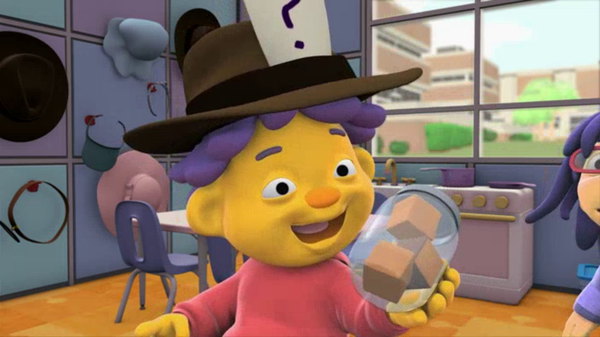 In addition to "Discoveries", these are "Earth in 30 seconds" and "Space in 30 seconds". The principle of the books is simple: each page is one topic that can be mastered in 30 seconds, and a task that can be done in about the same time. In our book - 30 discoveries that turned the world upside down. Scientific theories are presented in historical order, so that the child makes discoveries along with humanity. The book has a lot of infographics, unusual use of color and fonts. She, like the whole series, is focused on modern children and speaks the same language with them. On our website, read also about another book by Mike Goldsmith, Eureka.
In addition to "Discoveries", these are "Earth in 30 seconds" and "Space in 30 seconds". The principle of the books is simple: each page is one topic that can be mastered in 30 seconds, and a task that can be done in about the same time. In our book - 30 discoveries that turned the world upside down. Scientific theories are presented in historical order, so that the child makes discoveries along with humanity. The book has a lot of infographics, unusual use of color and fonts. She, like the whole series, is focused on modern children and speaks the same language with them. On our website, read also about another book by Mike Goldsmith, Eureka.
For whom? For older preschoolers and younger students, for those who ask the question “why” a hundred times a day?
The most confusing book
V.Levshin, Em.Alexandrova. “In the labyrinth of numbers. Journeys from A to Z with all stops. ID Meshcheryakova, 2014
This is an old Soviet book that has been waiting for a reprint for a long time.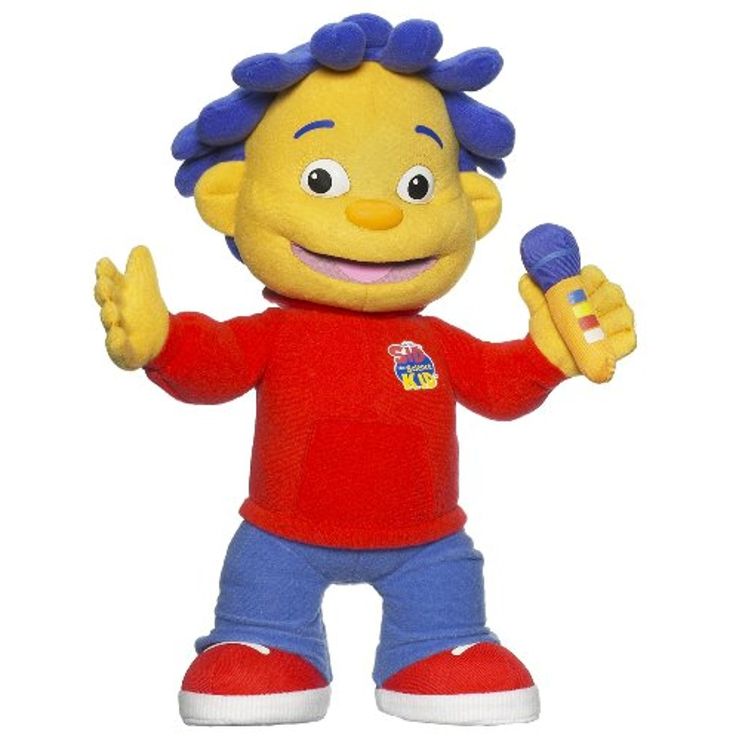 The boy Chit, making his way through the maze, finds himself in rooms marked with letters from "A" to "Z". In each room, his companion Arithmetic or Ari explains to him some mathematical principle associated with the corresponding letter. In each room, readers are asked to solve simple examples and problems related to sets, roots, fractions, etc.
The boy Chit, making his way through the maze, finds himself in rooms marked with letters from "A" to "Z". In each room, his companion Arithmetic or Ari explains to him some mathematical principle associated with the corresponding letter. In each room, readers are asked to solve simple examples and problems related to sets, roots, fractions, etc.
“And immediately a light hit them in the face, so dazzling that Chit gasped and closed his eyes. And when he opened his eyes, he gasped again - in amazement.
What he saw looked very much like an anthill. But, unlike the usual, it was a huge anthill, downright gigantic, made of very clean, very transparent glass, so that all its complex, intricate insides could be seen through. Yes, the anthill was visible through and through, and yet it was impossible to say that you saw it in its entirety: it was too vast for that. Countless strings of glass rooms scattered in all directions, dissolved somewhere in the whitish distance, endless streams-corridors.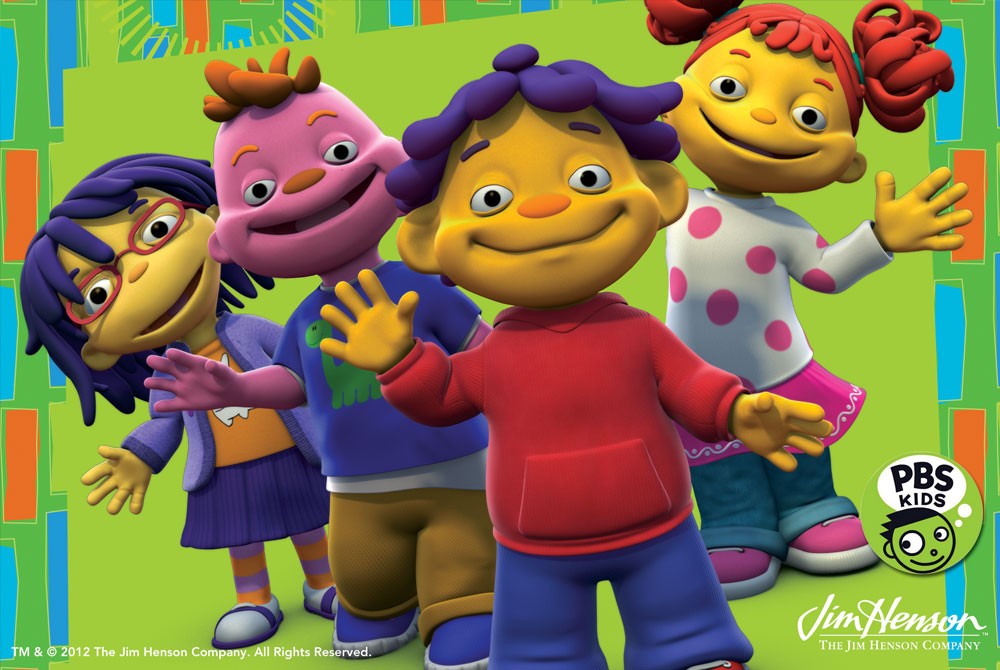 But where do they flow from? Where do they dry up? There was no way to figure it out.
But where do they flow from? Where do they dry up? There was no way to figure it out.
- So this is what infinity looks like! Chit sighed in fascination.
“Yeah, it looks like it,” Ari agreed. “No end, no beginning. True, what you see is just a general view of the labyrinth of numbers. And yet you will get the most visual representation of infinity here. After all, there is no end to the numbers!
For whom? For younger students who are interested in mathematics.
The most nostalgic book
G.W. Sapgir. "Adventures of Kubarik and Tomatic, or Merry Mathematics". Pink giraffe, 2014
This book was first published in the 1970s. And it has the extraordinary charm of Sapgir's texts, all the characteristic features of the literature that was written by the authors of the Lianozovo School and the Moscow Conceptualists. The little funny man Tomatic goes to find friends and finds, or rather, puts together either a horse or Kubarik's donkey from cubes, and then their mathematical adventures begin.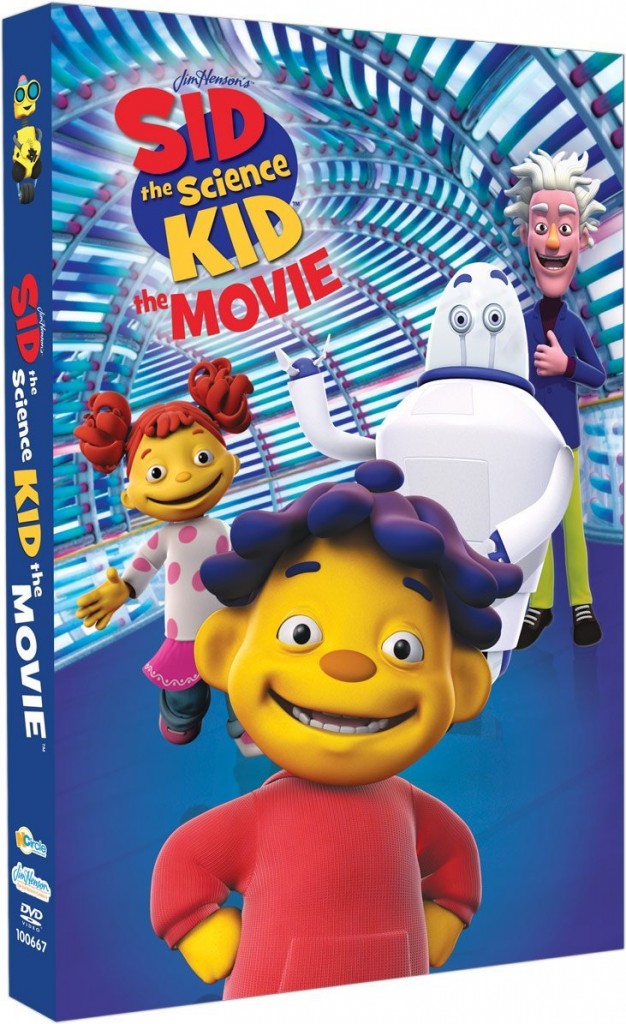 The book, published by the Pink Giraffe, is supplemented with methodological recommendations and tips for parents.
The book, published by the Pink Giraffe, is supplemented with methodological recommendations and tips for parents.
For whom? For preschoolers, as well as for parents who love Sapgir's books, especially those with illustrations by Vitaly Statsinsky.
The only book in verse
Andrea Beti Rosa Rivera, engineer. Career-Press, 2014
Retelling poetry is a thankless job, especially good poetry. Rather, we can thank two wonderful poets and translators: Maria Galina and Arkady Shtypel, who perfectly translated this book from English into Russian. The book will be a great gift for both children and adults. What is it about? About how useful it is to dream, and about the fact that you should always move forward, despite any obstacles.
This is the story of Rosa Rivera
That she was going to become an engineer.
In the classroom, thoughtful and embarrassed,
Quietly, like a mouse, she sat.
And after school, not knowing sadness,
Rose was looking for details in the dumps.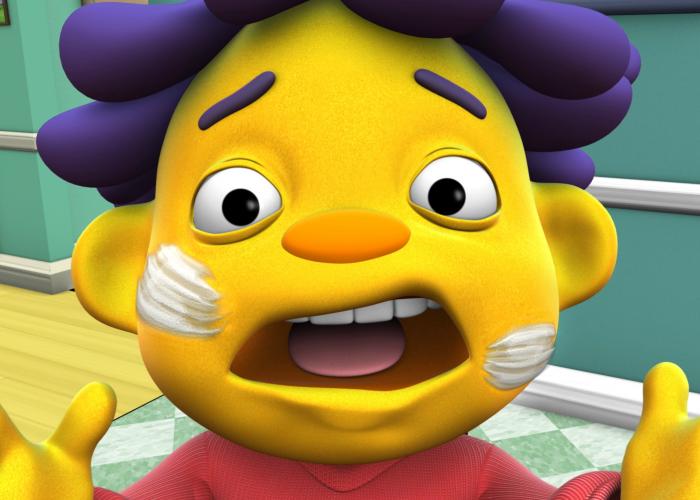
Broken umbrella and rusty colander -
Secretly carried everything to the attic.
In overalls, with a screwdriver in her hand
Rosa works in the attic…
For whom? For children from 5 to 99 years old.
The most book without words at all
Matthias Picard. "Jim the diver. Journey to the heart of the ocean. ZANGAVAR, 2014
This is the first 3D comic in Russian. We are invited to go to the underwater world together with an inquisitive explorer Jim, who one day, having found old diving equipment in a barn, decided to go down to the very heart of the ocean. And you can join it without getting up from the couch, but be sure to put on anaglyph glasses. Matthias Picard, using only black ink, has drawn this book in a deceptively simple, even crude style. But, using a simple printing trick, he achieved an unexpected result, giving his readers an unforgettable immersion in the world of fantasy, voluminous images and deep meaning.
For whom? from 0 to 99 years old.
The most useful book for a large family
Laura Overdeck. Bedtime math for toddlers and older kids. Career-Press, 2014
Laura Overdeck has set herself the rather difficult task of "taking math beyond a requirement and making it an exciting part of a child's daily life." And successfully dealt with it. Each chapter of the book is built around a funny topic that has nothing to do with school textbooks. Like how dolphin trainers work, how fast we go down roller coasters, which animal is the fastest, or which food is the craziest. And then the most interesting thing begins - practice.
This book has a unique quality - the tasks in it are designed for children of different ages, from very young children to primary schoolchildren. And this is actually very convenient, especially when you have to read before bed not to one child, but to two or three children of different ages.
For whom? For children from three to nine years old.
The most believable book
Luke Iaddaden. What world will we live in tomorrow? CLEVER, 2014
This is a very French book. If American authors begin with stories about flights to other planets, here the first chapter is devoted to the home, that is, the most important place for a person. The cities of the future are the perfect combination of the benefits of technology and rural living. Houses themselves produce electricity with the help of mini-wind farms and solar panels. Gardens and forests grow on their roofs, as well as ecological vegetables, which are grown by the residents of the house with the full feeling that they live in a quiet French village.
The main and very nice message of the book: wherever possible, to preserve more naturalness and use technology for this. In the future, for example, we will not eat pills, but rather, we will eat foods that are grown and prepared in the most natural way. But in a biology lesson, there is no need to dissect a live mouse - it will be enough to use its virtual copy. Read more in our material.
Read more in our material.
For whom? For children aged 10-13, and in fact, for older children, as well as for adults - for everyone who thinks and dreams about the future.
The loudest book
Mark Pekarsky Beat the drum and don't be afraid! Stories of Uncle Marcus. Art-Volkhonka, 2014.
“Beat the Drum” — this book is not entirely scientific, or rather, it is written in the genre where science, in this case the science of music, is woven into an artistic narrative, which is conducted on behalf of Uncle Marcus, alter ego of Mark Pekarsky, world famous percussionist, founder and leader of the percussion ensemble. This is a book about the history of music, tympanums and castanets, drums and bells, marimba and timpani - percussion, whose rhythm has accompanied mankind for many millennia. This constructivist volume is beautifully illustrated, it contains drawings, collages, photographs, various fonts are used - in general, not a book, but a real art object.
For whom? For those who are into music, especially percussion, but also for lovers of history, as well as unusual books. The texts are designed for ages 10-13.
The thickest book
“I want to know everything. 1957-2014". Detgiz, 2014
The scientific and educational almanac “I Want to Know Everything” was published in the USSR from 1957 to 1990. Then it was one of many popular science publications for children, but even in those days the almanac stood out against the general background: Articles are written professionally, clearly and captivatingly. The new collection includes articles by classics of cognitive literature, with the addition of modern commentaries. The book turned out to be voluminous - 400 pages.
You leaf through the book with pleasure, enjoying the visual range of Soviet childhood: the conquest of space, extinct mammoths, treasure island - an exciting world of science as presented for children. And the more contrasting are the new articles written especially for this collection.
For whom? First of all, probably, for dads and moms who read "I want to know everything" in childhood. But it is these books that you usually want to read to your children, so for children from 7 to 13 years old.
The eleventh book. The last but not least
Composition Jema Alvin Harris Why is the water wet? And other very important children's questions answered by very smart adults”, Career-Press, 2014
As I wrote at the beginning, it is very difficult to choose ten books. Therefore, there will still be eleven of them. "Water" is the third book of the Career-Press publishing house in this review. To date, it is this publishing house that produces many interesting, non-standard and very different books.
The most important thing to say about Why is Water Wet? - the fact that it is not about water at all, or rather, not only about water. This is a collection of famous people's answers to questions from children 4-12 years old.


